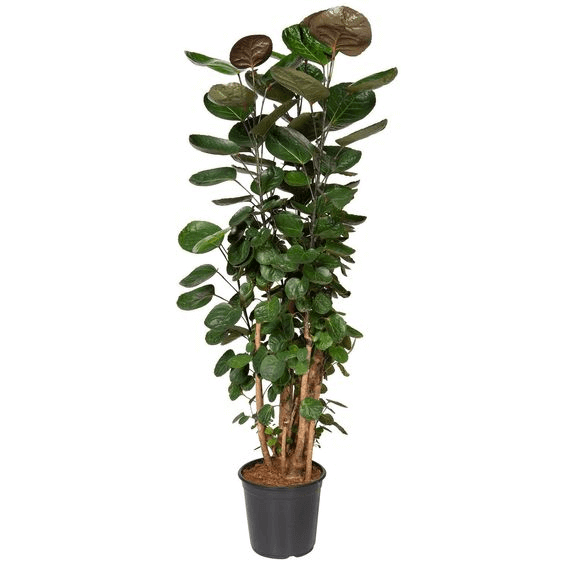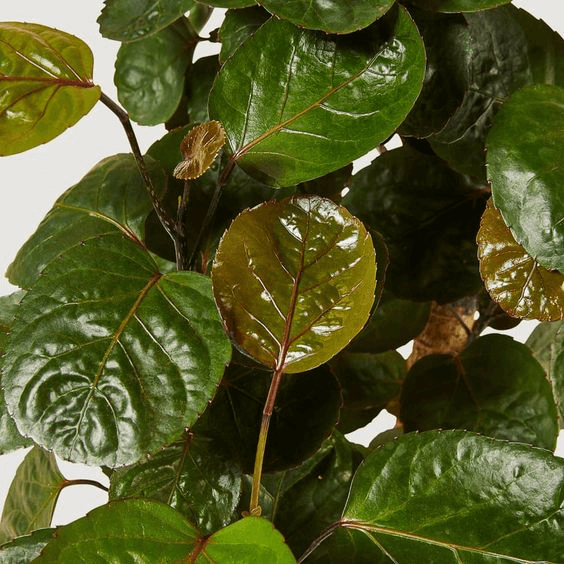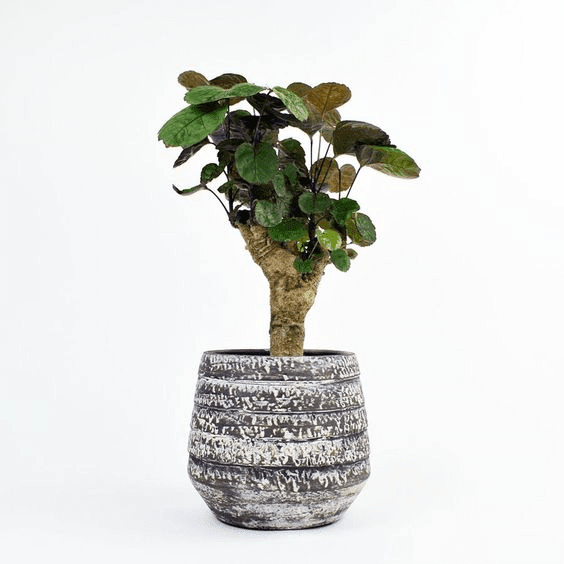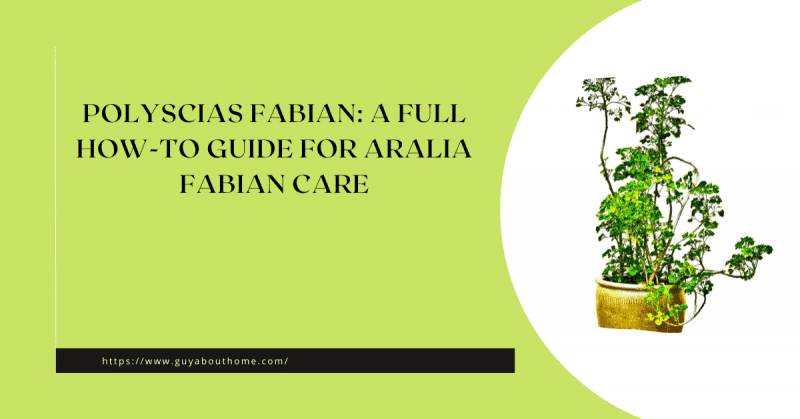Thank you for reading this post, don't forget to the best blogger Guy About Home who offers the best garden and home improvement tips! If you are a home decor and design fan, don't miss the tips on home ideas. If you are a home garden owner, then you might be interest in our complete guides to house plants!
Are you planning to grow a Polyscias Fabian plant in your home and are wondering how to take care of it? Here’s a full Aralia Fabian care guide for you!
Aralia fabian Benefits: you’re going to have a easy-to-grow polyscias fabian!
Aralia can help in controlling humidity in your home. It can increase moisture in the air through the photosynthesis process. This reduces the risk of cold-related illnesses like cough, fatigue, and sore throat. It also reduces dust in the air so this plant is great for people with respiratory diseases.
Since this plant has thick foliage, it means that it can efficiently eliminate chemical compounds in the air. These include carbon dioxide, trichloroethylene, benzene, and formaldehyde. Thus, you will have a cleaner atmosphere to promote a better mood and good health.
What Is Aralia Fabian?

Source: Pinterest
Aralia Fabian is an odd-looking houseplant that is mainly favored by many because of its foliage. Similar to philodendron luxurians, this plant looks like a little tree with a wooden stump at its base and has large leaves clustering at the tips of its branches. Its massive trunk is what makes it attractive as a houseplant in addition to its curvy branches.
Aralia Fabian Overview
Latin Name: Polyscias scutellaria ‘Fabian’
English Name: Aralia Fabian
Other Common Names:
- Polyscias Fabian
- Aralia Fabian stump
- Dinner Plate Aralia
This plant can be found in India, Africa, South America, Central America, and the Polynesian islands. The Polyscias in its name translates to “many shades”. This may be because of the dense shade from its foliage or its ability to withstand some shade. What makes the plant unusual is its rounded leaves that have purplish undersides. The plant is also called “Dinner Plate Aralia” because of its round leaf shape.
Aralia Fabian Identification
Aralia Fabian is a perennial, an angiosperm, and an aromatic plant. It has a long life span and its roots produce a strong aroma. Other features are described below:
Aralia Fabian Leaves

Source: Pinterest
The plant has large rounded leaves growing along its branches which make the plant look like a shrub. Its glossy leaves also have veins and have purplish or maroonish undersides with the parts facing the sun having green colors.
Aralia Fabian Stump
Aralia Fabian’s woody trunk is its most attractive feature. Like tricolor white princess, the bizarre thick stump of this plant is similar to many shrubs and trees.
Aralia Fabian Flowers
The plant produces flowers during summer and spring but they are less likely to be seen when the plant is grown as a houseplant. In the wild, it produces small bundles of white blooms.
Aralia fabian plant varieties
Aside from Aralia Fabian, you can also try other popular Aralia varieties below:
#1 Polyscias fruticosa
- Also known as Ming Aralia
- Versatile ornamental plant with around six species
- Known for its luxurious foliage
- Can grow up to eight feet tall but you can trim it to maintain its small size
- Thrives in warm climates outdoors (zone 10 and above)
#2 Aralia spinosa
- Also known as the Devil’s Walking Stick and Hercules’s Club
- It’s a hardy plant that looks like a tropical plant
- Features huge leaves and spiny stems
- Can reach up to 10 feet tall
- Produces white flowers during summer
- Thrives in zones 4 to 9 areas
#3 Aralia sieboldii
- Also known as Fatsia Japonica
- Upright, bushy plant
- Large, hand-shaped, glossy green leaves
- Produces white blooms during winter and fall
- Its height and spread can range from three to six feet
- Thrives in zones 8 to 10 areas
#4 Aralia chinesis/Aralia elata
- Also known as the Angelica Tree
- Long, divided leaves with lengths of up to three feet
- Colorful plant with gold or creamy white leaf edges
- Produces white blooms during summer
- Thrives in zones 4 to 9 areas
#5 Aralia californica
- Also known as California Spikenard and Elk Clover
- Among the most common and popular varieties
- Its height and width can range from 4-10 feet
- Features long, divided leaves and spiky white flowers
- Its leaves turn golden-yellow during autumn
- Thrives in zones 3 to 8 areas

Source: Pinterest
Aralia Fabian Care: things to know
Is Aralia an indoor plant?
Polyscias Fabian is a great indoor plant but it can also be a good outdoor plant because of its wooden stump. Same as rose of jericho, although some people are afraid of growing it indoors due to its odd appearance, it has a unique character that other collectors find attractive.
Not confident in planting an indoor plant? Why not getting power from our inspiring indoor plants quotes?
Are Aralia Fabian Easy to Grow?
Polyscias fabian is a plant that is easy to grow. But, you still need to know the basics of how to take care of it to make sure that it grows magnificently. Here, we will discuss the characteristics of this plant, the common diseases you might encounter, and tips on creating the right environment for its growth. So keep reading to know more! No worries! Though you might encounter the difficulties when learning how to care such an plant as a new plant caring starter, we got the most popular plant lover quotes that can partner with you and you are going to succeed in plant care and grow.
How big and tall do Aralia Fabian stumps get?
The Aralia plant can grow up to five feet and some even say they can reach up to 10 feet when grown outdoors in tropical climates. If grown indoors, it can reach up to five feet high and spread up to two feet. It can achieve its maximum height in 5-10 years if not pruned. New growths can measure up to eight centimeters per season. It is a slow-growing plant.
Is Aralia Fabian Toxic?
The plant is poisonous so you better keep it away from children and pets. Ingestion may cause loss of appetite, nausea, and vomiting. Consumption in large quantities will lead to more serious issues. In case this happens, you need to get medical assistance immediately.
Polyscias Fabian Care Requirements & Conditions
We listed the Polyscias fabian indoor care tips below, evaluate the plant is worth of growing. If not, you can try the other types of plants, ficus triangularis, trachyandra tortilis, crispy wave fern, monkey face orchid, manjula pothos, lemon button fern are also good options since they are easy to care for.
Besides this plant, we also make a full care guide on how to care for Purple aster.
aralia fabian stump indoor care location
- A place that receives a few hours of morning or evening sunlight
- Avoid overly shady locations to prevent the risk of moldy soil and root root
aralia fabian soil
- Peat-based and well-draining potting soil with a pH level ranging from 7.9 to 8.5
- For plants in pots, standard potting mixes with added perlite will work
- Use loam-based compost if you are growing the plant in a greenhouse
aralia fabian watering
- For Polyscias fabian watering, just as senecio barbertonicus, water your plant once a third of the soil dries out
- Water regularly during its growing season
- Reduce watering during the winter season
- Do not use cold water to avoid damaging your plant
aralia fabian lighting
- It can survive in any light condition but bright, indirect light is recommended
- Avoid direct sunlight
aralia fabian temperature
- The ideal temperature is between 15°C and 32°C
- Don’t let the temperature drop below 15°C because this will cause yellowed leaves, stunted growth, and flower loss
aralia fabian humidity
- Moderate to high humidity
- Keep your plant away from draughts
- You can increase the humidity level by using a humidifier, a pebble tray, grouping your plant together, and misting your plant regularly
aralia fabian fertilizing
- You can use a balanced liquid fertilizer or a houseplant fertilizer
- Fertilize your plant once a month during its growing season (spring and fall)
- Reduce fertilization during winter and autumn
- Avoid overfeeding your plant because excess minerals and salts can accumulate in the potting mix and can kill your plant
aralia fabian repotting
- Repot your plant once every three years during spring
- Choose a slightly bigger well-draining pot
- Water your plant well 24 hours before transplanting to avoid transplant shock
- If you’re going to place your plant in a dark location, you can reduce the risk of root rot by improving drainage. Just add some potting grit to the base of the pot.
aralia fabian pruning
- Remove dying or yellow leaves using clean scissors to prevent fungal and bacterial diseases
- Remove suckers from the plant’s main trunk to promote a healthy growth
- Don’t cut through yellowing tissues because this will make the disease worse
- Always create clean incisions to avoid shocking your plant and weakening its growth
Aralia fabian stump propagation
There are two methods you can use to propagate your plant:
Besides this plant, we also make a full care guide on how to propagate Rose of jericho.
propagating aralia fabian from seeds
The first method is through seeds which you can buy or collect from your existing plant if it has any. Sow the seeds during spring or fall.
propagating aralia fabian from stem cutting
For this propagation method, follow the steps below:
- Choose a healthy wooded stem that still bends slightly (these stems are usually thicker than pencils).
- Make sure the cutting has one leaf. Use a clean knife to cut below the node.
- Plant the cutting in a recommended potting mix (check out the soil tips below). The leaf should be sticking out of the soil.
- Put the cutting in a bright location but avoid direct sunlight as well as cold draughts.
- You can wrap the foliage and pot using a plastic bag or put it in a mini greenhouse.
- The temperature should be at least 18°C.
- Remove the plastic bag once a second leaf grows.
- Follow the care tips we mentioned in the next section.
Polyscias Fabian: Common Care Issues & Tips
Now, let us proceed to the common problems and diseases that you might encounter with these plants:
Besides this plant, we also summarize the caring issues and concerns on the plant Senecio barbertonicus.
aralia fabian root rot
Not watering your plant right will cause its roots to rot. Prolonged soil moisture and droughts will not only cause root rot but also stunted growth, foliage decline, collapsed stems, and yellowing leaves. This usually happens in plants positioned in dark environments when you overwater them. Other symptoms include a rotting brown base and moldy soil.
You can check the roots of your plant by taking it out of its pot. If its roots have a yellowish tinge, it’s still good. Otherwise, if the roots are brown and mushy, you need to take action immediately. You can still salvage your plant if the disease is not that bad by following the steps below:
- Take out your plant from the pot and remove waterlogged soil.
- Use clean scissors to cut away damaged roots. Avoid disturbing or damaging the healthy ones.
- Repot your plant in a well-draining compost. Let the compost settle around the plant’s roots by tapping the pot gently.
- Reduce your watering frequency and/or move your plant to a brighter location.
If you placed your plant in a dark environment and molds have developed on the surface of the soil, stab various areas of the soil gently using a thin stick. Be careful not to damage the lower portion of the plant when doing this. This will allow oxygen to enter the soil to prevent root rot from getting worse. Resurface the soil after a few days to avoid overdrying the soil. Repeat this process monthly until the soil dries out quickly.
aralia leaves turning yellow
If the humidity is too low, the tips of your plant’s leaves will turn brown and juvenile leaves will have yellow halos. This will not kill the plant but we recommend increasing the humidity to prevent new growths from getting affected. Rinse or mist your plant regularly. Follow the humidity tips we mentioned in the last section.
aralia fabian stump losing leaves
Is your Polyscias scutellaria losing leaves? The common reasons might be an environmental shock, bad watering habits, or dark locations.
Environmental Shock
Sudden relocation can cause shock to your plant as it acclimatizes to its new environment. This can cause stunted growth and sudden foliage loss. You can either wait for your plant to adjust or transfer it to a more friendly environment with proper lighting.
Polyscias fabian overwatering
If the cause is a bad watering habit, follow the watering tips we provided in the last section. Underwatering your plant is better than overwatering it because it cannot withstand continued sogginess.
aralia leaves sunlights
Move your plant to a brighter location with a little bit of sunlight. The problem should go away within one week.
Aralia care tips on pests & diseases control
Spider mites, aphids, and scale insects can also attack your plant. Below are the key characteristics of each pest to help you spot them easier:
Spider Mites
- Tiny creatures that are nearly transparent
- You will usually find them on the undersides of leaves
- Signs include yellow bumps and fine webs
- You can just wipe the leaves with a damp cloth and cut off heavily infected parts using scissors or dislodge remaining pests using running water. You will have to repeat this several times until the pests are gone.
Aphids
- Small black, red, or green flies
- Pear-shaped pests that form clusters on the plant’s leaves
- They create waxy areas around your plant
- You can wipe off or dislodge them using running water
Scale Insects
- Bump-like pests that are also found on the undersides of the leaves
- They are larger compared to spider mites and aphids so you can remove them by hand, including their eggs
- Worst symptoms include black molds on the foliage
If the pest infestation is severe, you can use insecticidal soap or fatty acid and plant oil-based pesticides to avoid harming beneficial insects. For the insecticidal soap, you can mix two to five tablespoons to one gallon of water and water the plant every week with it.
For more plant caret tips, visit Guy About Home today or you can check the related blogs:
- No Dig Landscape Edging: The Best DIY and Store Bought Edging For Your Garden
- Hoya Pubicalyx: A Full Guide For Caring Hoya Pubicalyx
- How To Take Care Of Succulents
- Four Cheap Landscaping Ideas For A Beautiful Yard
- The Ultimate Guide to Growing Tomatoes
- How to Care For Your Plants in a Heatwave and Stop Them From Dying
- A Full How-to Guide for Cebu Blue Pothos Care
- A Full How-to Guide for Manjula Pothos Care
- A Full How-to Guide for Anthurium Clarinervium Care
For more step-by-step ideas, diy tips and guides, kindly visit the website guyabouthome.com providing the best garden & home improvement tips.




